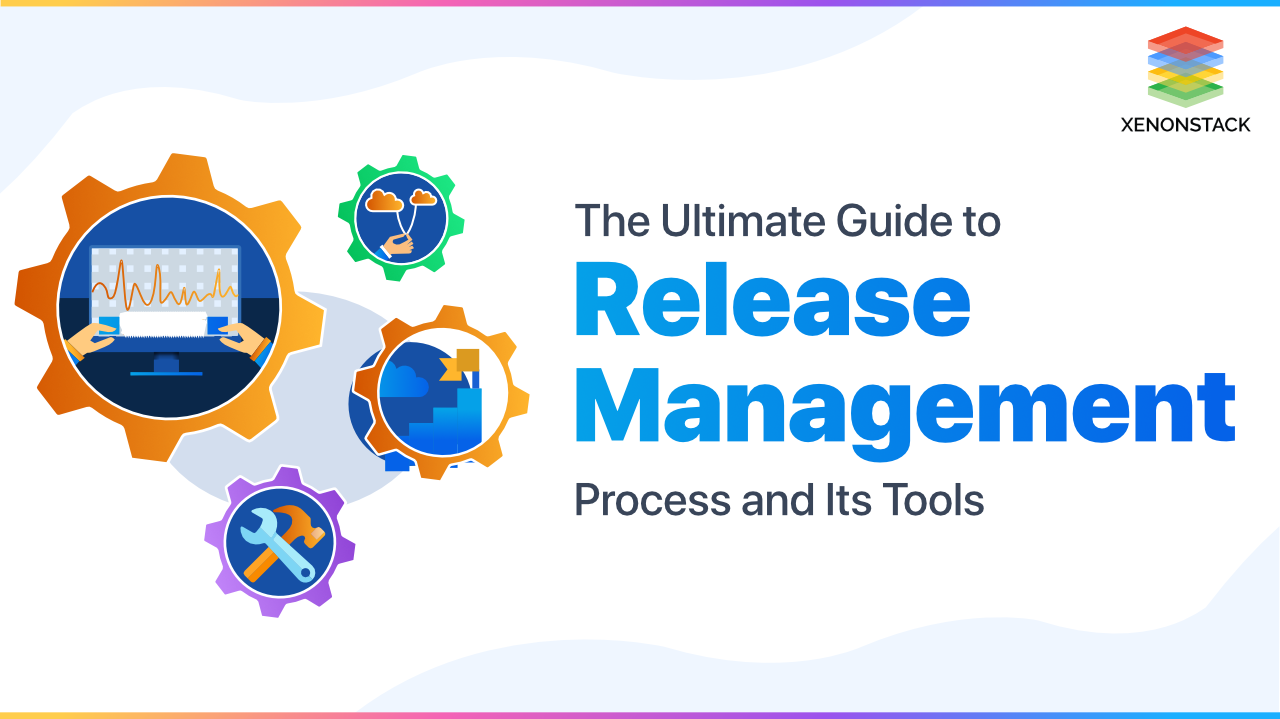
Application Release Engineering is a specialized, rapidly growing discipline in software engineering that focuses on building, packaging, and delivering software reliably and efficiently to end users. As organizations face increasing pressure to deliver high-quality software at an accelerated pace, mastering release engineering practices has become crucial for maintaining competitive advantage.
This comprehensive guide explores the fundamental concepts, best practices, and essential tools in Application Release Engineering that enable teams to streamline their software delivery pipeline and ensure consistent, reliable releases.
Understanding Application Release Engineering
What is Application Release Engineering?
Application Release Engineering involves the systematic approach to managing the entire release lifecycle - from code development to production deployment. It encompasses a set of practices and processes designed to ensure software is built, tested, and delivered predictably and reliably.
Release Engineers serve as critical bridges between development and operations teams, overseeing the release process from start to finish. Their primary responsibility is to facilitate smooth transitions of code from development environments to production.

Key Responsibilities in Release Engineering
-
Source Code Management: Implementing version control strategies and managing code repositories
-
Build Automation: Creating repeatable, reliable build processes for application code
-
Testing Integration: Coordinating various testing phases to ensure quality
-
Environment Management: Maintaining consistent environments across development, testing, and production
-
Deployment Automation: Streamlining the delivery of application code to various environments
-
Release Coordination: Orchestrating the release process across teams and systems
-
Documentation: Maintaining release notes, procedures, and configuration records
Release Engineers require expertise across multiple domains, including development practices, configuration management, testing methodologies, and system administration, making them versatile technical specialists in modern software organizations.
Best Practices for Source Code Management
Implementing an Effective Branching Strategy
A well-defined branching model is foundational to successful release engineering. The following branch types form the backbone of an effective strategy:
Main/Master Branch
-
Represents production-ready code at all times
-
Protected from direct commits
-
Changes merged only after thorough review and testing
-
All commits tagged with appropriate version numbers
Development Branch
- Integration point for feature development
- Serves as the base for feature branches
- Contains code that will be included in upcoming releases
- More dynamic than the master branch but still requires stability
Feature Branches
- Created from the development branch
- Isolated environment for developing new features
- Merged back to development after completion and review
- Never merged directly to master
Release Branches
- Created when preparing for a release
- Allow for final bug fixes and documentation
- No new features added once created
- Merged to both master and development after release
Hotfix Branches
- Created from master to address critical production issues
- Merged back to both master and development
- Typically result in patch version increments
Commit Best Practices
Well-structured commit messages are vital for communication and historical context:
- Use imperative, present tense (e.g., "Add feature" rather than "Added feature")
- Keep messages concise but descriptive (50-72 characters)
- Provide context about why the change was made
- Reference issue/ticket numbers when applicable
- Capitalize the first word of the subject line
- Avoid ending the subject with punctuation
- For complex changes, include a detailed body after the subject
CI/CD Pipeline Best Practices
A robust CI/CD pipeline is essential for efficient application release engineering. Implement these best practices to maximize effectiveness:
Pipeline Structure
Design your pipeline with these distinct stages:
-
Code Quality Check: Analyze source code for adherence to standards and potential issues
-
Unit Testing: Verify individual components function correctly
-
Integration Testing: Ensure components work together as expected
-
Artifact Building: Package application code into deployable units
-
Deployment to Test: Automatically deploy to test environments
-
Automated Acceptance Testing: Verify application behavior in test environments
-
Security Scanning: Identify potential vulnerabilities
-
Performance Testing: Verify application meets performance requirements
-
Deployment to Production: Controlled delivery to end-users
Testing Strategy
Implement a comprehensive testing approach:
-
Unit Tests: Fast-running tests for individual components
-
Integration Tests: Verify interaction between components
-
Functional Tests: Ensure application meets business requirements
-
Security Tests: Both static (SAST) and dynamic (DAST) analysis
-
Performance Tests: Load and stress testing under various conditions
-
Acceptance Tests: Verify application satisfies user needs
Environment Management
Maintain consistent environments across the development lifecycle:
-
Use infrastructure as code to define environments
-
Ensure parity between development, testing, and production
-
Implement clear naming conventions for different environments (e.g.,
dev.example.com,staging.example.com) -
Isolate environments appropriately to prevent cross-contamination
-
Consider using container technologies to ensure consistency
Artifact Management
Treat artifacts as critical assets:
-
Implement versioning for all artifacts
-
Store artifacts in a dedicated repository
-
Implement retention policies for historical artifacts
-
Use consistent naming conventions for artifacts
-
Never modify existing artifacts; create new versions instead
Deployment Strategies
Select the appropriate deployment strategy based on your application requirements:
Rolling Deployment
Best for: Applications requiring zero downtime with support for multiple versions running simultaneously.
-
Gradually replaces instances of the previous version with the new version
-
Minimizes risk by incrementally rolling out changes
-
Allows for monitoring during deployment
-
Automatic rollback if issues are detected
Blue/Green Deployment
Best for: Applications where complete testing in a production-like environment is crucial.
-
Maintains two identical environments (blue and green)
-
New version deployed to inactive environment
-
Traffic switched to new environment after testing
-
Enables immediate rollback by routing traffic back to original environment
-
Minimizes downtime but requires double the infrastructure
Canary Deployment
Best for: Testing new features with limited user impact.
-
Releases new version to a small subset of users first
-
Gradually increases the percentage of traffic to new version
-
Allows for real-world testing with minimal risk
-
Enables data-driven decisions based on user experience
Feature Toggles
Best for: Controlled feature rollout independent of deployment.
-
Deploy code in disabled state
-
Enable features selectively for specific users or segments
-
Decouple deployment from release
-
Allow for quick disabling of problematic features
Common Challenges and Solutions
-
Challenge: Environment Inconsistencies
Solution: Implement infrastructure as code (IaC) to define environments programmatically, ensuring consistency across development, testing, and production. Use containerization to package applications with their dependencies.
-
Challenge: Slow Build and Deployment Processes
Solution:
Optimize Docker images and build processes
Implement parallel testing
Use incremental builds where possible
Leverage caching mechanisms
Consider distributed build systems for large applications
-
Challenge: Coordination Between Teams
Solution: Implement clear release schedules, automated notification systems, and collaboration platforms. Define clear roles and responsibilities for each stage of the release process.
-
Challenge: Maintaining Release Quality
Solution: Implement automated quality gates at each stage of the pipeline. Define clear acceptance criteria and metrics for successful releases.
-
Challenge: Managing Dependencies
Solution: Implement dependency management tools, maintain private artifact repositories, and regularly audit and update dependencies to address security concerns.
Effective Release Rollback Strategies
Even with the best practices, issues may arise in production. Implement a robust rollback strategy:
-
Define Rollback Criteria: Establish clear thresholds for when to initiate rollback
-
Automate Rollback Procedures: Create scripts to revert to previous versions quickly
-
Test Rollback Procedures: Regularly practice rollbacks to ensure they work as expected
-
Maintain Previous Versions: Keep recent versions available for immediate redeployment
-
Monitor Post-Rollback: Verify system stability after rollback completion
Essential Tools for Application Release Engineering
Source Code Management
-
GitHub: Collaborative platform with robust code review and integration features
-
GitLab: Complete DevOps platform with built-in CI/CD capabilities
-
Bitbucket: Integrates well with other Atlassian products like Jira
Continuous Integration/Continuous Deployment
-
Jenkins: Highly customizable automation server with extensive plugin ecosystem
-
CircleCI: Cloud-native CI tool with first-class Docker support
-
GitHub Actions: Native CI/CD capabilities integrated with GitHub repositories
-
GitLab CI/CD: Integrated solution for GitLab repositories
-
Azure DevOps: Microsoft's comprehensive DevOps service
Build Tools
-
Maven: Java build and dependency management tool
-
Gradle: Flexible build system for Java and beyond
-
npm/Yarn: Package managers for JavaScript applications
-
Docker: Containerization platform for consistent builds and deployments
Artifact Repositories
-
JFrog Artifactory: Universal repository manager supporting all major package formats
-
Nexus Repository: Repository manager supporting multiple formats
-
Amazon ECR: Container registry for Docker images
-
GitLab Package Registry: Integrated package management for GitLab
Configuration Management
-
Ansible: Simple, agentless automation platform
-
Puppet: Infrastructure automation for complex environments
-
Chef: Infrastructure automation focusing on configuration management
-
Terraform: Infrastructure as code for cloud resources
Release Orchestration
-
Spinnaker: Multi-cloud continuous delivery platform
-
Argo CD: GitOps continuous delivery tool for Kubernetes
-
Octopus Deploy: Deployment automation server
-
XebiaLabs XL Release: Release orchestration platform
-
Harness: Continuous delivery as a service platform
Monitoring and Observability
-
Prometheus: Monitoring and alerting toolkit
-
Grafana: Analytics and monitoring solution
-
Datadog: Cloud monitoring and analytics platform
-
New Relic: Application performance monitoring
-
ELK Stack: Elasticsearch, Logstash, and Kibana for log analysis
Application Release Orchestration (ARO)
Application Release Orchestration goes beyond basic automation to coordinate the entire release process across teams, environments, and technologies.
Benefits of ARO Implementation
-
End-to-End Visibility: Complete visibility across the release pipeline.
-
Improved Coordination: Better synchronization between development, QA, and operations.
-
Reduced Manual Effort: Automation of complex, multi-step release processes.
-
Consistency: Standardized release processes across projects.
-
Risk Reduction: Early identification of potential issues.
-
Compliance: Built-in audit trails and compliance controls.
Leading ARO Platforms
-
Digital.ai Release: Comprehensive enterprise release orchestration
-
CloudBees Flow: End-to-end application release orchestration
-
Plutora: Release, environment, and test management
-
Harness CD: Continuous delivery with intelligent verification
How to Prepare for a Successful Application Release
Before shipping your application to end users, ensure these critical steps are completed:
-
Changelog Creation: Document all changes, enhancements, and fixes.
-
QA Signoff: Formal verification that quality requirements are met.
-
Documentation: Complete user guides and technical documentation.
-
Training: Prepare support and sales teams for the new release.
-
Release Checklist: Comprehensive verification of all release requirements.
-
Version Tagging: Proper semantic versioning and tagging in source control.
-
Release Notes: User-facing summary of changes and new features.
-
Backup Strategy: Ensure critical systems and data are backed up.
-
Communication Plan: Notify all stakeholders about the release.
-
Post-Release Monitoring: Plan for tracking application performance after release.
Key Metrics to Measure Application Release Success
Implement these key metrics to measure and improve your release engineering processes:
-
Deployment Frequency: How often you deploy to production
-
Lead Time for Changes: Time from commit to production
-
Change Failure Rate: Percentage of deployments causing issues
-
Mean Time to Recovery: Average time to restore service after failure
-
Build Success Rate: Percentage of successful CI/CD pipeline executions
-
Time to Deploy: Duration of the deployment process
-
Rollback Rate: Frequency of deployment rollbacks
-
Test Pass Rate: Percentage of automated tests passing on first run
-
Code Coverage: Percentage of code covered by automated tests
-
User-Impacting Incidents: Number of issues affecting users post-release
Final Thoughts on Application Release Engineering
Application Release Engineering has evolved from a supporting function to a critical discipline that enables organizations to deliver software with speed, quality, and reliability. By implementing the best practices and leveraging the appropriate tools outlined in this guide, teams can establish efficient release processes that support rapid, consistent software delivery.
The future of release engineering continues to evolve with trends like GitOps, progressive delivery, and AI-assisted release management. Organizations that invest in robust release engineering practices position themselves to respond more effectively to market demands while maintaining high-quality standards.
As you refine your application release processes, remember that the ultimate goal is to create a reliable, repeatable system that enables your organization to deliver value to users with minimal friction and maximum confidence.
Next Steps towards Application Release Engineering
Talk to our experts about advancing Application Release Engineering. Discover how industries and IT departments leverage automated workflows and intelligent decision-making to streamline software delivery. Utilize AI-driven automation to optimize release processes, enhance efficiency, and accelerate time-to-market.





